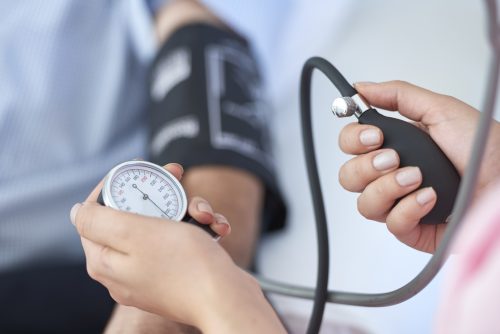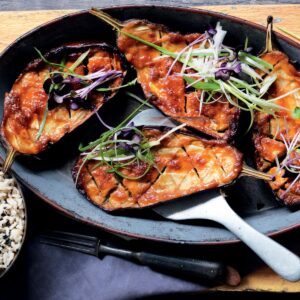
We look at a common concern and how to manage it.
“I’ve got blood pressure,” a patient in hospital once told me. I was pleased to hear it, because without blood pressure, you would certainly be dead!
When doctors take your blood pressure they are checking how hard your blood pushes against your arteries and veins as it moves around the body. The top number measures the pressure of the blood when your heart pumps blood out around your body. The bottom number measures the pressure when your heart relaxes and refills with blood, ready for the next pump. A reading of 120/80 is considered normal.
Think of your arteries as a hose with your heart as the tap. If you turn the tap on high, the water pumps out at high pressure. If you turn the tap down, pressure drops. There are times we need to get blood out to our muscles fast – when jumping out of the way of a speeding car for instance. High blood pressure in this case may be a lifesaver. But if your blood pressure is constantly high, you increase your risk of a stroke, heart attack, heart failure and kidney disease.
High blood pressure, also known as hypertension, is often called the ‘silent killer’ because there are usually no symptoms. The only way to find out whether your blood pressure is high is to get it checked.
In New Zealand, one in six people take high blood pressure medication, although many more will have high blood pressure but not realise it.
What’s normal?
Normal blood pressure is around 120/80. While definitions for high blood pressure vary, your doctor is likely to be concerned about your blood pressure if it reaches up to 140 (systolic reading – the top number) or 90 (diastolic reading – bottom number). Even if your blood pressure hasn’t reached this level but it is increasing, you may want to make changes to avoid getting there!
How to cope with high blood pressure
Mention high blood pressure and most of us immediately think of cutting back on salt. That’s a good start. But there are also foods that if you eat more of, will help the condition. In fact, for some people, the food we eat more of may have more effect than the food we reduce. The Dietary Approaches to Stop Hypertension (DASH) diet works on this principle.
In this well-known study, people on the diet dropped their blood pressure within two weeks. And this was achieved without reducing salt or alcohol. The people who also cut back on salt had their blood pressure drop even further.
Food to fight high blood pressure
Lots of fruit and vegetables
For healthy blood pressure, the balance of minerals is important. This means less sodium and more potassium, magnesium and calcium.
Potassium blunts the effect of sodium on blood pressure. The best way to get more potassium in your diet is to eat more fruit and vegetables. Aim to eat four to five servings of fruit, and four to five servings of vegetables each day. Bananas, grapefruit, oranges, dried fruit, leafy green vegetables like spinach, broccoli, mushrooms, potatoes, avocado and tomatoes are all high in potassium. And magnesium usually tags along in the same foods. A word of warning, however, about grapefruit: this citrus fruit can affect some blood pressure medications, so if you are on medication, check with your doctor whether grapefruit will have an affect on the effectiveness of your particular medication.
If you hope to bypass fruit and vegetables by taking a potassium supplement, think again. Too much potassium can be dangerous for your heart, and you will miss out on the other health benefits that fruit and vegetables offer.
Low-fat milk and yoghurt
Health experts recommend we eat two or more servings of low-fat dairy food each day. This is not only important for strong bones and teeth but also for healthy blood pressure. Sardines and salmon are also rich in calcium.
It’s important to have enough calcium, but more doesn’t mean better. There is no strong evidence that taking a calcium supplement will help lower blood pressure by as much as a half. It’s better to stick to food, so make a banana smoothie, add yoghurt to your muesli or have sardines and tomato on grainy toast for lunch.
Legumes, nuts and whole grains
Dried beans, split peas, lentils, nuts and whole grains are all rich in magnesium. Include them in your diet by eating porridge or muesli for breakfast, snacking on a small handful of nuts most days, and making a legume-based meal a couple of times a week by tossing a few red lentils into stews and soups to thicken them. Make a yummy split pea soup, add a can of beans to mince or simply enjoy baked beans on grainy toast.
Oily fish, walnuts, flaxseed
Omega-3 fats found in oily fish, walnuts, flaxseed and canola oil help reduce high blood pressure. These fats help relax the blood vessel walls so they can expand as blood rushes through. One study of 46,500 people aged over 40, with a range of blood pressure readings, found those who ate more omega-3 rich foods had lower blood pressure.
It can be tempting to just pop an omega-3 pill instead of changing your food. The Heart Foundation recommends people get their omega-3 fats from food. But if you do take an omega-3 supplement, let your doctor know because the blood-thinning effects can be potent.
Other ways to reduce high blood pressure
Eat less salt
Most of us eat more salt, or to be exact, sodium, than we need. The Ministry of Health recommends no more than 2000mg sodium a day for healthy blood pressure – which is about 1 teaspoon of salt (sodium chloride). New Zealanders average around 80% more than this.
Even if you don’t add salt to your food, more than 75% of salt we eat comes from processed foods such as bread, sauces, processed meat, soups, cheese, salty snacks and some breakfast cereals. And the high sodium foods don’t always taste salty. For example, a plate of cornflakes or puffed rice can have as much sodium as a small bag of potato crisps, and a slice of bread can have the same amount of sodium as the teaspoon of Marmite you spread on it!
If you have to cut back on salt, don’t despair. For the first three or four weeks food will taste bland but your taste buds do adjust. And when they do, your old food will taste far too salty.
Cutting back on salt will likely reduce your blood pressure. This is especially so for older people and those who already have high blood pressure, diabetes, kidney disease or are overweight. Some people, however, are salt insensitive, which means the amount of salt they eat has no effect on their blood pressure.
Reduce weight
If you are overweight, losing weight is one of the best ways to drop your blood pressure. If you are already on medication, losing weight often helps medication to work better and you may even need a lower dose.
Studies have found that people who lost 3-9% of their weight lowered their systolic and diastolic (top and bottom number) pressure by an average of three points more than people who didn’t lose weight.
Be active
Thirty minutes (not necessarily all at once) a day of moderate intensity exercise such as walking, cycling, dancing, gardening or swimming helps lower your blood pressure and your weight. Being active can reduce high blood pressure as much as some drugs. People who are physically active can reduce the risk of having high blood pressure.
Building strong muscles is also important but it’s recommended to skip lifting heavy weights if your blood pressure is already high. Any great strain will raise your blood pressure level considerably.
Just a small drink
People who drink lots of alcohol can reduce their blood pressure by cutting back. In fact, alcohol may increase blood pressure even in moderate drinkers. The Heart Foundation recommends no more than two standard drinks a day for women, with no more than 10 per week and no more than three standard drinks a day for men, with no more than 15 per week. In addition, at least two alcohol-free days every week are recommended. A standard drink is 100ml wine, 300ml beer or 30ml spirits. A bottle of wine contains seven to eight standard drinks, depending on the alcohol content.
Skip the sugar
When we cut back on saturated fat in pies, pastries, processed fatty meat and full-cream dairy foods, what do we eat instead?
One study compared three healthy, low-saturated fat diets. One was high in monounsaturated fat, one high in carbohydrate and one high in protein. To put it in food terms, think of a sandwich. Instead of having a salami and cheese sandwich, the sandwich filling is avocado or peanut butter (mono), baked beans or tuna (protein) or jam (carbohydrate).
The monounsaturated fat and protein diets had the best effects on blood pressure and blood fats.
Many of us think if we swap to the low-fat, low glycemic index (GI) version of cakes, biscuits, sweet yoghurt and juice, we are doing the right thing. But eating a low-fat diet with lots of processed foods with sugar may have harmful health effects including raising blood pressure. Higher sugar intake may also increase uric acid which in turn inhibits nitric oxide – the body’s natural blood pressure lowerer.
Salt and iodine
In New Zealand we had a special problem in that we needed to eat less salt, and yet iodine added to salt had become our main source of the essential mineral iodine.
We heeded the public health messages and conscientiously cut back on salt in our cooking and at the table. at the same time non-iodised sea salt, rock salt and others became trendy, so often when we were using salt it was not iodised. Less salt is good for our blood pressure but iodine deficiency re-emerged in the late 20th century.
It’s estimated up to 85% of our salt intake can come from processed and manufactured foods, but most of this is not iodised. To increase the iodine in our food supply to a more acceptable level, since September 2009 bread manufacturers have been required to use iodised salt in all breads except organic and unleavened breads.
While we don’t recommend using salt unnecessarily, when you do use salt always choose and iodised salt. he packaging will be clearly labelled.
www.healthyfood.com










